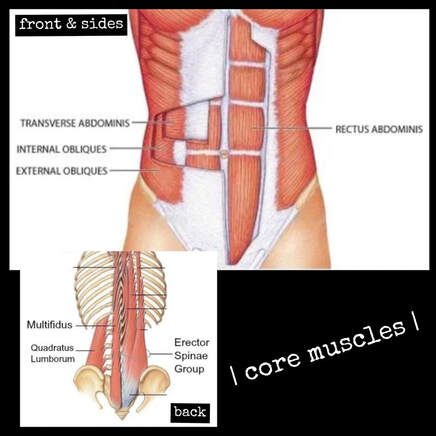|
The mention of core muscles would lead most people to think of those coveted ‘washboard 6-pack’ but with any exercise or movement discipline, this reference goes beyond the front abdominal muscles. Emphasis on the core is common in many physical disciplines. Why is that? Many people trained for aesthetic and strengthening reasons, though it’s not unusual to see them overly focusing on the frontal area in a bid to achieve these ‘washboard abs’. Perhaps we tend to notice only what we can see, forgetting that we’re 3-dimensional beings after-all. The word ‘core’ indicates centre or the heart of an object and we’re forgetting that our core muscles would include the sides and the back of our body too. In other words, the core muscles are like a belt that wraps around the trunk of our body, it’s key function which is to offer stability and equilibrium, supporting the spine from excessive load and consequently preventing the ease to injuries. It acts as a link between upper and lower body, bridging the action/reaction relationship between top and bottom. To better understand this area of the body, I’m focusing on a few key areas of the core…
[ Front & Sides ] Rectus Abdominis – frontal superficial abdominal muscle (the washboard abs in other words…) that supports forward folding movements and is strengthened by crunch exercises. External Obliques – frontal side abdominal muscles that’s strengthened through side-bending and opposite side rotation movements. Internal Obliques – Muscles that wrap around the waist, lies under the external obliques and above the transverse abdominis, supporting side-bending and same-side rotation movements. In other words, during a twisted-crunch exercise where the left shoulder rotates to right hip – muscular contraction occurs in the right internal oblique and left external oblique! Transverse Abdominis – Deepest side abdominal muscles; considered one of the most important component of the core whose function is to compress and provide stability. Activated through hollowing or bracing actions such as maintaining an overall squeezing action of the core during High Plank. [ Back ] Multifidus – Series of small muscles that travel from base up the length of the spine; supports spinal extension and rotation so asanas such as Bird Dog is strengthening for the area. Erector Spinae – A group of back muscles that run from sacrum to base of the skull; supports extension and side-bending actions of the spine hence it’s strengthened by poses such as Salambasana or Utkatasana. Quadratus Lumborum – Deepest abdominal muscle in the lower back, between the top of pelvis and lowest rib. Supports side-bends and extension of the spine, so it’s strengthened by poses such as Vasisthasana.
0 Comments
Leave a Reply. |
Hongyi the yogiFull-time yoga teacher & trainee yoga therapist in London. Eager to share, eager to learn! Archives
July 2021
Categories |


 RSS Feed
RSS Feed
